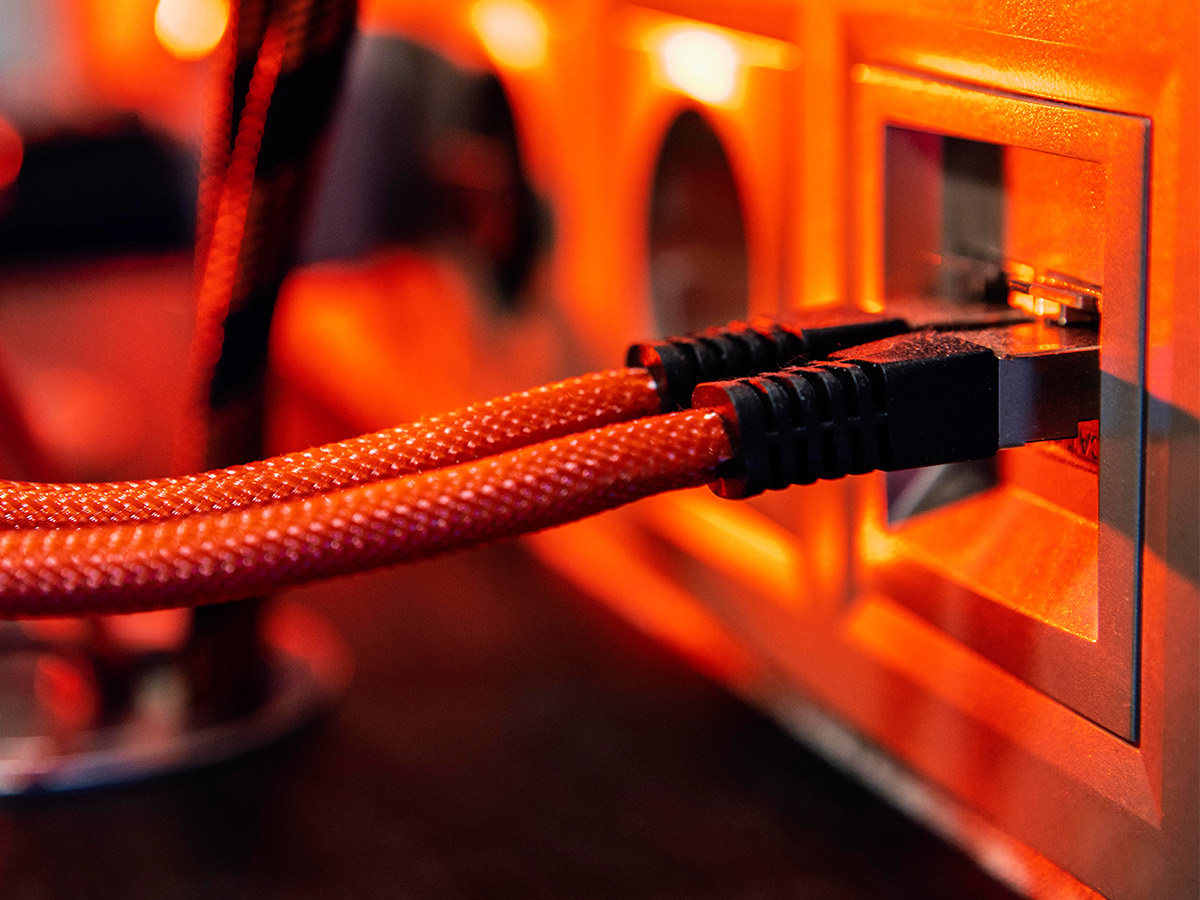Imagine a homeowner struggling to get a 4K projector to display at full resolution because the cable run is just too long. Or a corporate event where the speaker’s deck feed flickers on the rear screen, right when the punchline arrives.
Even in sprawling retail spaces, digital signage often fails to stay sharp when the cabling becomes the bottleneck. We see a commonality: the limitations of HDMI cabling.
While HDMI cables are the backbone of high-definition video and audio, they were never designed to cover long distances. Push them beyond 25 feet for 4K or 50 feet for 1080p, and signals start to weaken, images drop out, and the viewing experience is compromised. This is where the HDMI extender earns its place.
It’s a powerful tool that enables AV systems, whether at home, in boardrooms, or stadiums, to maintain clarity and reliability over long distances. Let’s explore when a cable is enough, when an extender becomes essential, and what features matter most.
What is an HDMI Extender?
Simply put, an HDMI extender is a transmitter–receiver system designed to send HDMI signals far beyond the standard cable’s reach. Instead of relying on copper HDMI conductors, extenders transmit the signal via
Ethernet, fibre optic, or even wireless technologies, then reconstitute it back into HDMI for the display.
Flawless 4K or even 8K video, even from hundreds of thousands of feet away, is visible as a result. Extenders often require external power, but what they deliver is priceless: stability, clean signal integrity, and flexibility in installation.
When is an HDMI Cable Enough?
For many setups, extenders may not be necessary. Standard HDMI cables suffice well in scenarios such as:
- Short-range setups: Between a TV and a media player in the same room, passive HDMI cables perform reliably up to 25 feet for 4K or 50 feet for HD.
- Simpler installation: A single cable means fewer devices, fewer potential failures, and fewer setup headaches.
- No external power required: Unlike extenders, cables draw their signal power directly from HDMI ports.
- Affordable and practical: A quality HDMI cable often costs less than an extender kit.
When the distance is modest and the environment uncomplicated, sticking with a cable keeps things efficient and cost-effective.
Signs You Might Need an HDMI Extender
But AV setups don’t always stay simple. Here’s when extenders move from luxury to necessity:
- Cable runs beyond 25–40 feet: Anything longer risks signal instability, especially with 4K or 8K.
- Signal degradation: Flickering images, “sparkles,” or repeated handshaking errors indicate the cable is failing.
- Routing through walls or ceilings: HDMI cables are bulky and rigid; extenders enable the use of slim Cat6 or fibre cables.
- Events and conferences: A single source feeding multiple displays across rooms or venues requires extender support.
- Clean design requirements: Concealed wiring with wall plates is easier and neater with extender kits.
In essence, if the setup is complex, lengthy, or of a professional appearance, extenders become the practical choice.
Features to Look for in an HDMI Extender
Not all extenders are built equal. Choosing the right one requires evaluating:
Type:
- Ethernet (HDBaseT): Affordable, reliable up to 100m, often with added features like Power over Cable.
- Fibre optic: Immune to interference, supports kilometres of uncompressed 4K, ideal for mission-critical installs.
- Wireless: Great for short, cable-free scenarios, though limited by range and interference.
- Resolution & formats: Ensure support for 4K HDR, Dolby Vision, Dolby Atmos, and, in future-proof scenarios, HDMI 2.1 readiness.
- EDID & HDCP: Extenders must handle handshake data seamlessly to avoid compatibility issues with protected content.
- Range & stability: Look for zero-latency, uncompressed extenders if working with critical video.
- Ease of installation: Plug-and-play, compact design, and PoC simplify deployment, especially in tight or power-limited spaces.
- Compression Ratio: Compatible with the new Ultra High Definition sources and displays, displaying signals at resolutions up to 4K @60 4:4:4 (18Gbps) and shows crystal clear HDR media to its best ability.
- Bandwidth: With HDBaseT transmission up to 40m range at 4k (70m at 1080p), two-way PoC, plus proprietary VLC compression technology, the PT-HDBT-200 is a cutting-edge professional HDBaseT extender set at a commercial price point.
HDMI extenders may be invisible once installed, but they are often the difference between frustration and flawless performance, the reason a wedding projector runs smoothly, a CEO’s keynote commands attention
without glitches, or a home theatre delivers true 4K as intended. The principle is clear: short runs require a good HDMI cable, but once distance, design, or professional reliability come into play, extenders are
non-negotiable.
Scaling AV Without Compromise
For integrators and end-users who refuse to compromise on quality, PureLink has long been a benchmark. Now available through Alphatec, PureLink’s extenders cover both residential and enterprise needs:
- HDBaseT kits that carry 4K HDR over 100 meters of Cat6, with PoC and loop-out for local monitoring.
- Fibre optic extenders, such as the PureLink PT-HDOF-100, are capable of transmitting uncompressed 4K@60Hz across 10 kilometres of fibre, making them ideal for campus-wide or inter-building AV distribution.
PureLink emphasises robust build, latest-format support, and reliability, making its solutions popular in broadcast studios, corporate systems, and luxury installations alike. Alphatec ensures these products are
accessible with local expertise and support across India and Asia.

